U.S. Armed Forces manuals, prepared at U.S. taxpayer expense, can be incredible aids in a wide variety of civilian tasks.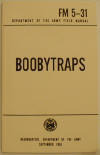
The amount of useful information in US Army, Air Force, Navy, and Marine Corps technical and field manuals is amazing.
Download these manuals, read these manuals, use these manuals; You already paid for them!
Official Sources for Armed Forces Field Manuals
General Dennis J. Reimer Training and Doctrine Digital Library
A great source for U.S. Army Field Manuals
Marine Corps Combat Development Command: Doctrine Division
Providing Digital Information to the Warfighter
AF e-publishing
The Official Source Site for Air Force Administrative Publications and Forms
Unofficial Sources for Army Field Manuals
Army Field Manuals at GlobalSecurity.org
Selected Army Field Manuals
FM 21-75
Combat Skills of the Soldier
FM 34-52
US Army Field Manual 34-52: Intelligence Interrogation
FM 34-3
US Army Field Manual 34-3: Intelligence Analysis
FM 34-10
US Army Field Manual 34-10: Division Intelligence and Electronic Warfare Operations
FM21-20
US Army Field Manual 21-20: Physical Fitness Training
FM 2-22.9
Rifle Marksmanship: M16A1, M16A2/3, M16A4 and M4 Carbine
FM 2-23.35
Combat Training with Pistols, M9 and M11
FM 3-07
Stability Operations and Support Operations
FM 3-97.61
Military Mountaineering
FM 4-25.11
First Aid
Armed Forces Manuals at Amazon.com
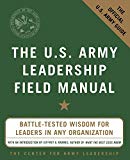
The U.S. Army Leadership Field Manual
For mor than 50 years, The U.S. Army Leadership Field Manual has provided leadership training for every officer training program in the U.S. Army. This trade edition brings the manual’s value-based leadership principles and practices to today’s business world. The result is a compelling examination of how to be an effective leader when the survival of your team literally hangs on your decisions. More than 60 gripping vignettes and stories illustrate historical and contemporary examples of army leaders who made a difference.

U.S. Army Survival Manual

Army Officer’s Guide (Army Officer’s Guide)
The essential professional reference for Army officers for over 70 years completely updated with all current information needed by officers of all ranks and branches. This is the definitive guide of what the Army expects from its officers in leadership, technical skills, and character, and what every officer-junior or experienced-needs to know to succeed in the 21st-century Army. Packed full of information on duty performance, professional development, academic opportunities, organization and missions, pay and benefits, family services, military courtesies and customs, and professional and social life.
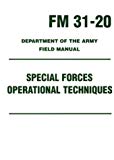
Special Forces Operational Techniques (FM 31-20)
In every respect, except for our weatherproof cover and handy pocket size, this is an exact reprint of the famous Army Field Manual 31-20. Covers improvised weapons, intelligence, psychological ops, communications, logistics, survival, infiltration, Special Forces field maneuvers, demolition, raids and ambushes, amphibious air ops and more.
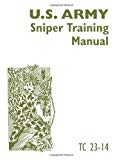
U.S. Army Sniper Training Manual
With the help of this sniper’s bible, the famed U.S. Army snipers killed 1,187 Vietcong in one five-month period and expended only 1.37 rounds per kill. This manual is also an excellent tool for honing hunting and target skills.

Bioterrorism and Germ Weapons - U.S. Army Field Manual for the Treatment of Biological Warfare Agent Casualties (Anthrax, Smallpox, Plague, Viral Fevers, Toxins, Delivery Methods, Detection, Symptoms, Treatment, Equipment)
This public-domain Department of Defense field manual, used by the U.S. Army, Navy, Air Force, and Marines, serves as a guide and a reference for trained members of the Armed Forces Medical Services and other medically qualified personnel on the recognition and treatment of biological warfare (BW) agent casualties. Information contained in this publication may also be relevant for the diagnosis and treatment of patients with naturally acquired diseases or illnesses due to pathogens with BW potential. It classifies and describes potential BW agents, provides procedures for collecting, handling and labeling, shipping, and identifying potential BW agents, describes procedures for medical diagnosing, treating, and management of BW casualties, and describes medical management and treatment in BW operations. The treatment modalities contained in this manual differ from standard textbooks in that they apply to BW agent exposures. The method of exposure for most BW agents is by inhalation; whereas, the endemic disease exposure (if applicable) is by other means.
Some of the diseases covered include: anthrax, brucellosis, melioidosis, glanders, plague, Q fever, tularemia, smallpox, Venezuelan equine encephalitis, viral hemorrhagic fevers, toxins, clostridium botulinum toxin, clostridium perfringen toxins, ricin, saxitoxin, staphylococcal enterotoxin B, and trichothecene mycotoxins. For each disease, it provides general information, agent delivery method, environmental detection, prevention, clinical presentation and symptoms, diagnosis, treatment, control of patients, contacts, and treatment areas, and medical evacuation.
It also includes medical management data, military facilities, definitions, abbreviations and acronyms. This up-to-date manual was prepared July 2000. It is a superb source of current information on the diagnosis and treatment of potential biological weapon casualties.
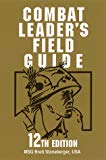
Combat Leader’s Field Guide (Combat Leader’s Field Guide)
Newly revised edition of the most popular handbook of basic combat skills for soldiers and other security forces operating in combat units or that must fight as infantry, rear area security forces, and military operations other than war. Condenses information from dozens of Army manuals for operations such as offense, defense, patrols, ambushes, special environments, and other tactical operations. Also includes basic soldier combat skills such as calls for artillery fire, first aid, NBC defense, communications and radio procedures, map reading and navigation skills, camouflage, identification of friendly and enemy vehicles, minefields, weapons, and fighting positions.
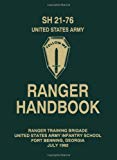
Ranger Handbook
Paladin is now offering the most up-to-date version in print of the famed U.S. Army Ranger Handbook. This manual draws from bloody lessons learned from two centuries of special operations combat. Crammed with info on demolitions, booby traps, communications, patrolling, tactical movement, battle drills, combat intelligence and much more.
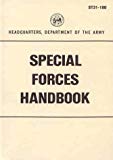
Special Forces Handbook
From Vietnam and Laos to Central America and Africa, the U.S. Army Special Forces has won renown for its expertise in guerrilla warfare. Special Forces Handbook-a classic in the field-covers guerrilla tactics and missions, demolition techniques such as improvised incendiaries, air ops, weapons, communications, survival skills and more.
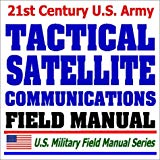
U.S. Army Tactical Satellite Communications (FM 24-11): Milstar, UHF, Multichannel, Manpack, Antijamming
This is the latest edition of an important U.S. Army field manual (FM) dealing with the tactical satellite (TACSAT) communications system.
In the preface, it states: “This manual is a basic reference document for using the tactical satellite (TACSAT) communications system. The purpose of the manual is to translate doctrine and detailed technical data into practical guidance for planning and operating a TACSAT communications system. It provides guidance for deploying, controlling, and managing TACSAT communications systems and terminals. This manual includes a description of the TACSAT communications equipment. It also provides instructions for its doctrinal use. This doctrine provides a firm foundation of guidance to TACSAT communications users. The intended users of this manual are operators/supervisors, planners, and to some extent, maintainers. Operators/supervisors will use the manual for basic instruction and as a guide on how to use the equipment. Planners will use it for system and network planning. Maintainers can use it as an adjunct to the technical manual and as a quick reference when needed.”
This manual is produced by Headquarters, US Army Training and Doctrine Command (TRADOC).
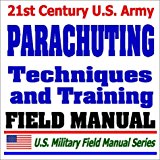
U.S. Army Parachuting Techniques and Training (FM 57-220): Parachutes, Parachute Jumping, Jumpmaster, Airborne Operations, Paratroops
This is the latest edition of an important U.S. Army field manual (FM) dealing with basic and advanced training and techniques for static line parachuting. It is designed to standardize procedures for initial qualification and training of personnel in their duties and responsibilities in airborne operations.
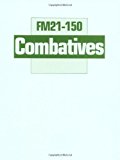
FM 21-150: Combatives
When soldiers become so entangled with enemy forces that firearms and grenades are not practical, hand-to-hand combat skills become vital. Learn the U.S. Army’s most current techniques for basic and advanced unarmed fighting, field-expedient weapons, combat-speed training, transition techniques, sentry removal and much more.
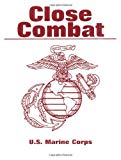
U.S. Marine Corps Close Combat Manual
This exclusive new manual contains the most current close combat methods being taught to U.S. Marines for use on today’s battlefield. It outlines the Marine Corps’ latest lethal and non-lethal weapons techniques, use of knives and sticks and the full spectrum of unarmed tactics.
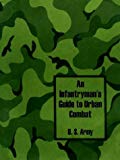
An Infantryman’s Guide to Urban Combat
This manual provides infantry doctrine, tactics, and techniques for urban combat at battalion level and below. The urban growth in all areas of the world places a high premium on the development of those skills described in this manual and on the highest standards of discipline and leadership.
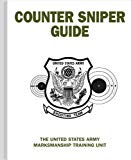
Counter Sniper Guide
This information from the U.S. Army Marksmanship Training Unit is designed to help a trained individual in the selection of equipment, training and employment of the countersniper.
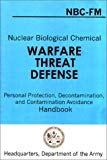
Nuclear Biological Chemical Warfare Threat Defense
For thirty years, the U.S. military has actively developed defensive strategies to combat nuclear, biological, and chemical (NBC) threats. This book is a compilation of the three core NBC defensive tactics that form the basis of U.S. military training theory relating to NBC operations. The editors have distilled these training references into a compact guide that may form part of a larger civilian defensive application reference library. While this text in large part contains U.S. Army training material, it has been edited for civilian application and can not be considered an official government publication.
While some defensive strategies lie outside of the scope of civilian defense, other techniques may be applied to civil protection in response to the growing threat of bioterrorism, non-governmental nuclear proliferation, and chemical terrorism threats.
Chapters include the following topics: Personnel Individual Protective Equipment; Analysis of Your Personal Protection; Nuclear Protection; Biological Protection Techniques; Group Protection; Food, Water, and Personal Decontamination; Protections in Extreme Climates; and Protection and Decontamination Task Training.

Soldier’s Handbook for Defense Against Chemical and Biological Operations and Nuclear Warfare
This manual provides the soldier with procedures for individual defensive measures against chemical and biological operations and nuclear warfare. It also provides guidance for company commanders and platoon, section, and squad leaders for the accomplishment of individual training against chemical, biological, and nuclear attack.
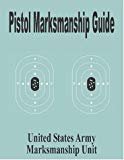
Pistol Marksmanship Guide
The United States Army Marksmanship School has compiled this guide with the intent of providing assistance to pistol marksmen throughout the United States. Much of the information has been contributed by championship caliber U.S. Army pistol shooters and coaches. The text is designed for ready reference and contains the fundamentals of pistol marksmanship and the most advanced techniques known to these experts. The data presents a comprehensive coverage of the many facets of pistol marksmanship and related subjects.
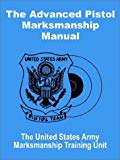
The Advanced Pistol Marksmanship Manual
The Advanced Pistol Marksmanship Manual has been compiled with a determination to improve pistol marksmanship. It is a compilation of data gathered from many years of personal experience of proven U. S. Army Pistol Champions and coaches condensed into a ready reference and covering the most advanced and proven techniques known to date. The marksmen and coaches who contributed ideas gained from championship competitive experience did so with a firm desire to impart the knowledge gained for the promotion of pistol marksmanship training. The data represents a comprehensive effort covering many facets of pistol marksmanship and related subjects gained from the research of authoritative articles, personal interviews, observation of foreign competition and contributions closely associated with pistol activities.
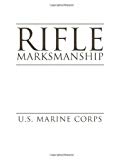
Rifle Marksmanship
During U.S. military operations, the Marine rifleman is among the first to confront the enemy and the last to hang his weapon on the rack after the conflict is won. That is why U.S. Marines have the reputation as the finest combat riflemen in the world. Now, you can learn their secrets. This manual is the very latest Marine doctrine on the art and science of shooting effectively in battle. Its 10 chapters teach the versatility, flexibility and skills needed to deal with a situation at any level of intensity across the entire range of military operations. Topics covered include the proper combat mind-set; cleaning your rifle under all weather conditions; rifle handling and marksmanship the Marine way; engaging targets from behind cover; obtaining a battlefield zero; engaging immediate threat, multiple and moving targets; shooting at night and at unknown distances; and much more.

U.S. Marine Guidebook of Essential Subjects
This repected book is used by all Marines. Chapters include Marine Corps history, Code of Conduct, close order drill, first aid, rifle marksmanship, land navigation and much more. Includes excellent photographs and illustrations.
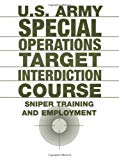
U.S. Army Special Operations Target Interdiction Course : Sniper Training And Employment
This is the official manual used by the U.S. Army to train snipers in support of Special Operations Forces (SOF) missions. It covers sniper team selection, organizationa dn employments; equipment requirements; marksmanship training; field skills; terrain considerations; ammunition and more.

U.S. Army Combat Stress Field Manual (FM 6-22.5) - Sleep Deprivation, Suicide Prevention
This is the latest edition of an important U.S. Army field manual (FM) providing the “tactics, techniques, and procedures required for small-unit leaders to effectively prevent, identify, and manage combat stress when it occurs. This publication contains essential information about combat and combat-related stress. It describes, in layman’s terms, techniques to prevent, identify, and treat harmful combat stress reactions at the lowest level or until professional medical assistance is available. It provides a basic understanding of the causes of stress and describes the preventive actions that can be taken to avoid or reduce its harmful effects. It describes how to identify and manage combat stress symptoms when they appear, and provides techniques to prepare units to handle combat stress reactions when they occur. All small-unit leaders should read this publication.”

U.S. Marine Corps Desert Handbook
As demonstrated in Kuwait, the U.S. Marines know how to fight and survive in the desert. This handbook reveals their secrets. Learn about the military aspects of deserts; how to prevent sand from ruining your weapons, vehicles and gear; the effects of extreme heat on equipment; desert driving techniques; how to best treat a scorpion bite; and more.
